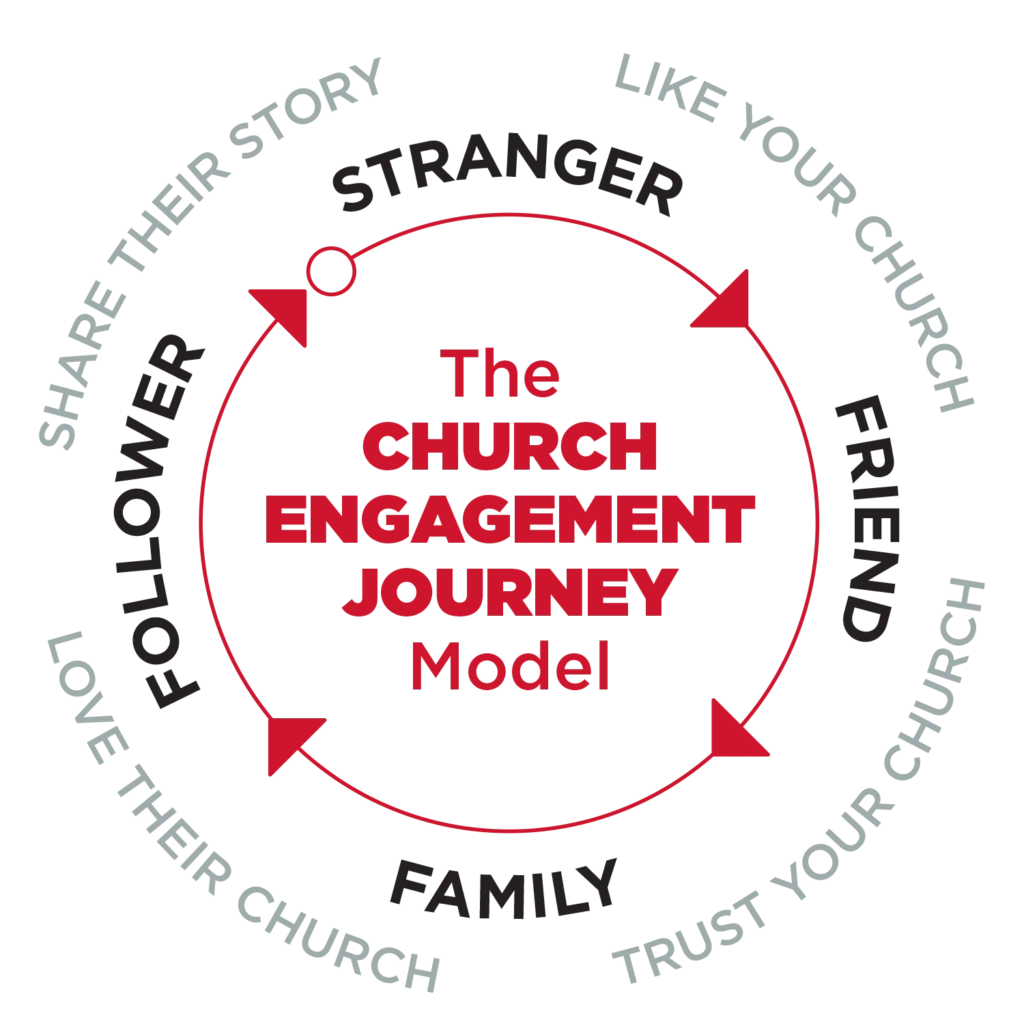YOU GOT THE POSITION... YOU'RE THE LEADER... NOW WHAT?
Menu

The following posts will address the 5 Church Trends that Demand Our Attention. Let’s begin with TREND 1: Online and virtual church experiences.
Do you remember the Burger King tagline, “Have it Your Way?”
It’s one thing to give people a few burger options. Creating individualistic discipleship pathways for dozens, hundreds, or thousands of unique people is philosophically impossible.
Yet here we are. In the experience economy where everyone expects (not desires, but expects) to “Have Church My Way.”
As a pastor, it’s quite a frustrating dilemma. You got into ministry to reach those far from God and help inspire people to grow as Christ followers. A few decades ago, you would have constructed a massive “Education Building,” filled it with Sunday School classes, and assumed the best. Yet, the further we move away from cultural Christianity, the less likely and willing people are to pursue faith growth.
Everyone wants church their way. Jesus their way. And online options there way.
Thanks, Burger King.
Now this is a question worth some consideration. If we need to discover new ways of creating discipleship pathways, we should begin with the end in mind: Mature Faith.
While our faith is never fully “mature,” we hope that our churches help our congregation’s faith mature.
Just like human maturity, spiritual maturation is a process of progress. Discipleship is a journey. The kind that requires active steps of application. This reality is important for us church leaders. If growing faith is a journey, it is our job to support and inspire the journey, but we cannot become overwhelmed in attempting to create individual, “choose your own adventure” experiences.
While leading Woodstock City Church, I spent time analyzing engagement data to discover a typical journey we could replicate across our church. I hoped to find something like Small Groups came first, followed by initial giving, followed by low-commitment serving, then increased serving, and eventually percentage giving.
Turns out there is no standard path. Or at least there isn’t a narrow path to replicate.
When we followed the path of any individual, each journey looked a bit like a customer ordering from Burger King – they each did it their own way.
However, and this was an important discovery, we did find that categories of people had some common engagement similarities.
This meant that, while we couldn’t customize a faith journey for each unique individual, we could create a common journey that supported and inspired each category along the way.
As a church, we cannot force a faith journey but are responsible for creating conditions conducive for the trip.
What you’re about to see exists in the marketplace under the term “Customer Journey.” Customer journeys have been utilized for decades. Conceptually, a customer journey is the path a company creates to engage non-customers to become customers and eventually raving fans. If you’re tempted to stiff-arm a marketplace concept like this, hang tight. Discipleship is nothing more than a journey with God through sequential steps of faith. That’s nothing more than a spiritual “customer” journey.
There are 4 categories of people in and around your church that require a specific emotional engagement to inspire forward faith movement.

A healthy discipleship journey begins with those disengaged. For simplicity, we’ll call them Strangers.
As we said, churches can’t force a personal faith journey, but they can create conditions conducive to the journey. This is precisely what we need to do to reach and eventually engage Strangers. Like a company, reaching Strangers means understanding who they are and, more importantly, why they are estranged from your church.
Research with this group offers us painful clarity: Most non-believers don’t like Christians and don’t trust the church to be helpful or relevant.
Ouch.
That’s not the beginning we’d prefer, but it is where most Strangers are.
Where can we start? We could attempt to remodel our church after other churches that have shown some success of late, but these churches are few and far between. And, if we look closely enough, most churches that are “thriving” today have not grown from conversion but transfer. If your church grows while the church down the street closes, that’s not growth. That’s sheep swapping. We must find a way to engage with those far from God (and the church) and inspire them along a discipleship pathway.
Enter the Customer Journey concept. Many companies, businesses, and service providers have overcome similar issues in the marketplace.
When a company begins, or a product is launched, virtually all potential customers need to be made aware the company and product exist. Potential customers don’t necessarily like the company or trust the product — yet. Great businesses understand this, so they use a Customer Journey to introduce strangers to the product, service, and company.
Until recently, churches didn’t need a holistic customer journey. But those times are long gone. The death of cultural Christianity has created a need for churches to back up our ministry model to engage Strangers who don’t like or trust us. If we hope to engage and inspire a discipleship journey, as we’ve already said, we must begin where these individuals emotionally exist with God, us, and our church.
So back to the research. Strangers don’t like us. Our first step is to become likable.
I’ve written extensively about this in prior posts. Check these out to dig a bit deeper into the “how” of engaging strangers:
Also, I work with dozens of churches every month to help build a better discipleship pathway. Perhaps the Rethinking Your Church Model Masterclass Experience is exactly what you need.
CATEGORY 2: Friends
In a Customer Journey, friends know about you and like you, but they don’t yet trust you. Once again, the research proves churches have their work cut out for them.
You may have a positive brand in your community, but that doesn’t mean anyone outside your church will show up, much less engage. There’s a reason the self-help industry has grown to an estimated 15,000 self-help books published in the United States each year and approaching $14 billion. It’s not that people aren’t looking for help. It’s that they don’t see your church as helpful.
Establishing and growing trust is the secret to moving people along our engagement journey. Once a Stranger likes you, it’s time to help them trust you. This is a continuum effort. We can lose trust in a moment, but it takes time to gain trust. The fastest path to trust is by helping people where they need help. Practically helping people in their marriages, parenting, and work helps build trust. We can do this both digitally and in person.
In addition to the links above, this post may help, too: Creating and Sustaining The Big Mo — Breaking Free in 2023
CATEGORY 3: Family
As trust grows, people begin to see your church as their church. This is more than swapping a pronoun. At this point, we work to help people take that trust we’ve established and engage more deeply in more traditional spiritual formation steps, like groups, mentoring, Bible study, generosity, and volunteerism.
People fall in love with things (people, companies, etc.) that love them and improve their lives. I love Stance socks. They’ve changed my life for the better. Same with Vuori joggers. Not to sound trite, but when your church helps move people toward God through sequential and spiritual steps of faith, they fall increasingly in love with their church. This love grows stronger the more their faith grows richer. And the more their family grows together and towards God.
The key emotion for our church family is “love.”
CATEGORY 4: Followers
Finally arriving at the pinnacle of our faith engagement journey: Followers. Followers are raving fans. These people so love their church and their faith experiences through their church that they cannot stop telling everyone they know (and don’t know) about their church.
Followers of Jesus live for others and share their story and church with them. Strategically, the church’s job is to partner with followers to create online and in-person experiences worthy of being shared and experienced.
I get it. I’m grateful that we aren’t expected to create individualistic discipleship journeys! But I also believe we can systematically build a church ministry model that supports each category where they are while inspiring them forward along a discipleship journey. And in doing so, at least from the perspective of the journeyer, the path can feel individualistic.
I don’t want to downplay the complexity, though. Success in the church today is as complicated as ever. We face an ever-changing cultural landscape and individualistic freedoms. We have to navigate and integrate digital channels and in-person experiences. People are more hostile to church and Christianity, with a growing gap between believers and non-believers. We have plenty to overcome, but overcome we must. It’s our calling. Our commission.
You don’t need to figure it all out alone. All you need is a passion for maximizing your mission and a strategic partner from which to learn.
I’d be happy to serve you and your church in this capacity. I’ve been helping churches add more intention to their mission for a few years. If you have a passion for your community, your church, and spiritual growth, let’s build a plan to maximize your mission by supporting and inspiring the categories of people in and around your church.

